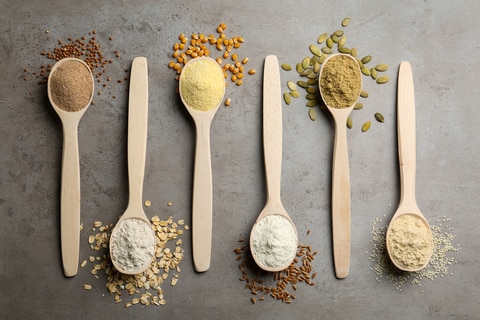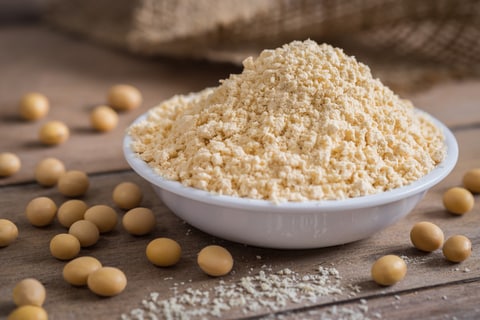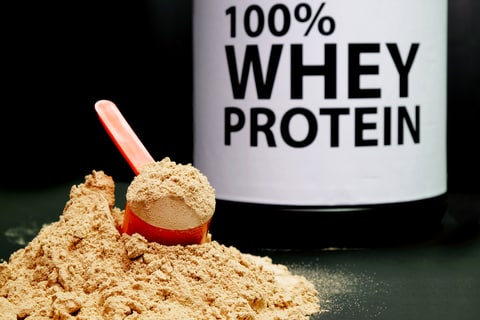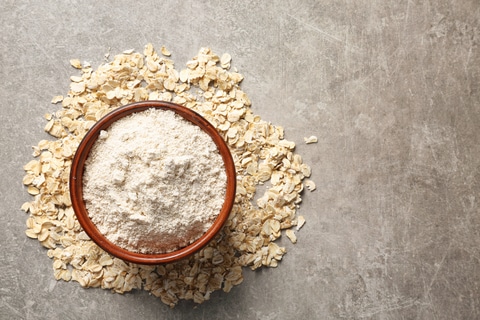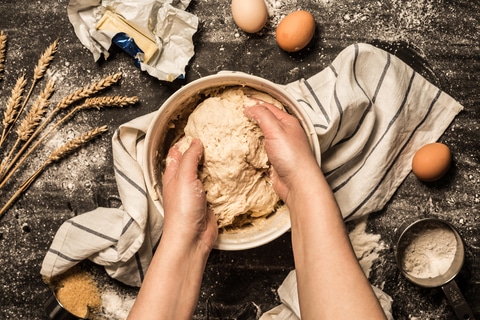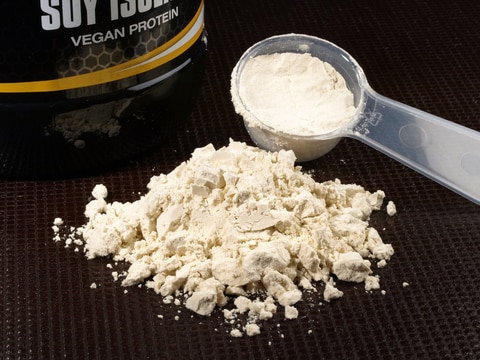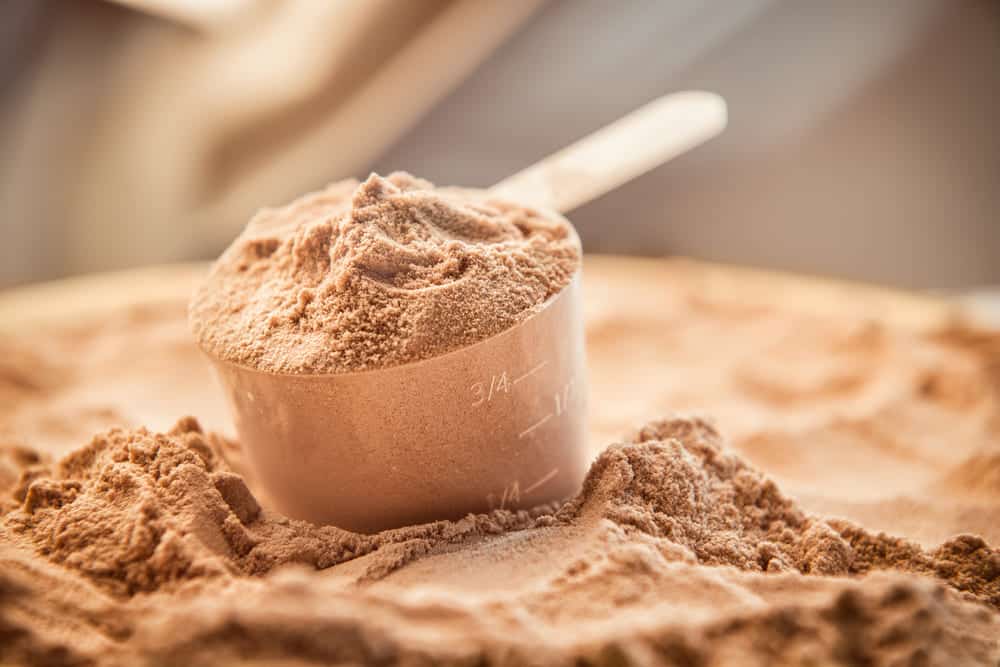
DISCLOSURE: This post may contain affiliate links, meaning when you click the links and make a purchase, I receive a commission. As an Amazon Associate I earn from qualifying purchases.
Many people, especially those who are trying to build muscle or who are invalids, as the idea of using protein powder in their diets because it is so nutritious.
Protein powder is usually only added to smoothies and you may have wondered if you can substitute it for flour in things like baking. Read on to see if it’s possible or not!
What Is Protein Powder Made From?
Protein powders are usually obtained from dried and powdered soybeans, peas, hemp, eggs, or milk. Some are a combination of several of these ingredients.
They often include additives like sugar, artificial flavorings and thickeners, vitamins, and minerals. Each scoop usually contains between ten and thirty grams of protein.
Supplements that have been formulated for muscle building usually contain more protein than those formulated for weight loss.
Can I Substitute Protein Powder for Flour?
Substituting protein powder for flour is incredibly easy (and fun!) if you follow a few guidelines.
It can be used when making brownies, cookies, pancakes, muffins, and bread. The most intriguing point is that protein powder looks like flour (the texture is similar but slightly grainier).
The best thing about substituting protein powder for flour is that it reacts in pretty much the same way as flour. Protein powder has a dry texture and can also absorb liquids so it can deliver a similar texture in baked goods as flour.
However, it is important to understand that protein powders are available in different forms.
Some protein powders blend well into smoothies but tend to coagulate upon cooking.
On the other hand, some protein powders work like flour when baked but have the tendency to make lumps if they are blended with water or other liquids.
Types of Protein Powder
Various types of protein powders are available. However, the most common type of protein powders includes soy, whey, rice, or a soy/whey blend.
Usually, the soy/whey blend and pure whey protein powders will deliver the best results in baking. Rice protein powder has a delicate, dry texture so isn’t the best for baking and coconut flour tends to go hard.
Soy protein powder works fine as a substitute for flour but has a strong aftertaste (even if you opt for the unflavored soy protein powder). Use organic soy protein powder for the best results, but it can be expensive.
[amazon box =”B00TIY6G2A”]
Our first choice is whey protein powder when substituting protein powder for flour. This is mainly because it delivers high-end results when you use it with flour.
[amazon box =”B00EACSHF4″]
In particular, oat flour is the best choice of flour type to be used with protein powder. The best part of whey protein powder is that it delivers a cake-like texture to baked foods.
[amazon box =”B06X9KWMSY”]
To summarize, then, substituting protein powder for flour is possible if you are mindful of the type of protein powder.
However, please remember that it’s best to use a combination of flour and protein powder for a better baking outcome. Don’t use protein powder alone.
Watchpoints
- When substituting protein powder for some of the flour in a recipe, try not to bake at too high a temperature. Whey powder, in particular, starts to “denature” or break down at temperatures over 160˚C.
- Another thing to bear in mind is that protein powder can give baked goods a harder or tougher texture. To prevent this, never overmix your batter or dough.
- Some protein powders contain a lot of added sugar – some as much as 23 g a scoop. Avoid these as they lead to excess weight gain and blood sugar spikes. Plus, they can lead to your recipe having too much sugar overall which will ruin the texture.
- Never substitute more than half the flour with protein powder or your baking will be tough and hard.
- Always add something to give extra moisture when baking with protein powder or the food will be dry and rubbery. Use things like applesauce, banana, cottage cheese, pumpkin puree, or cooked mashed sweet potato.
- When making protein-rich cookies, it is vital to use some form of fat like oil or butter. This makes them moist and crunchy. If you don’t use fat, they will be like cardboard.
Choosing Between Unflavored and Flavored Protein Powder
We recommend using unflavored protein powder for baking as the flavored varieties may spoil or overpower the taste of the other ingredients in your baking.
To illustrate, if you need to make brownies, use cocoa powder and unflavored protein powder rather than using chocolate-flavored protein powder.
Also, we suggest that you opt for vegan protein powder because it delivers better texture when you replace flour in baking.
[amazon box =”B082TTFF87″]
We hope this has helped you to understand how to use protein powder in your baking. Follow the principles, have fun, and enjoy your baking!
